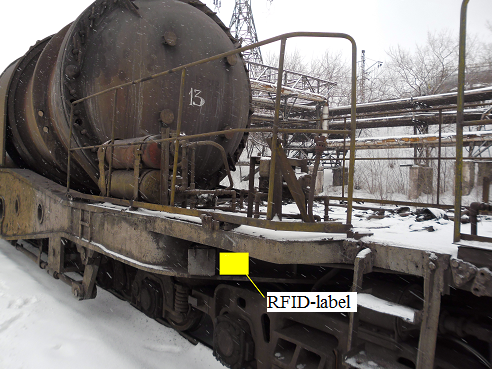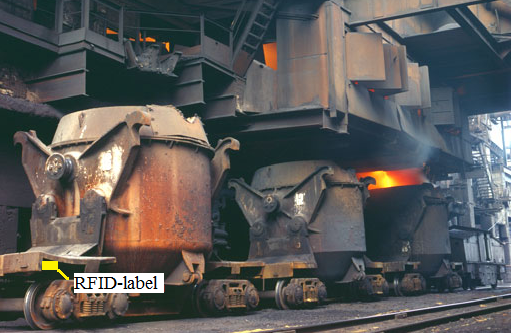ГИБРИДНАЯ СИСТЕМА ОЦЕНКИ МАССЫ ЧУГУНА НА ВЫПУСКЕ ИЗ ДОМЕННОЙ ПЕЧИ
Глебова Е.С. 1, Блинников А.А. 2, Чернопольский А.Д.3, Карташев Р.А. 4
1Аспирант, Санкт-Петербургский национальный исследовательский университет информационных технологий, механики и оптики,2Кандидат технических наук, Санкт-Петербургский национальный исследовательский университет информационных технологий, механики и оптики, 3 Кандидат технических наук, генеральный директор ООО «НТЦ «Прибор», г. Санкт-Петербург, 4 Ведущий инженер ООО «НТЦ «Прибор», г. Санкт-Петербург
ГИБРИДНАЯ СИСТЕМА ОЦЕНКИ МАССЫ ЧУГУНА НА ВЫПУСКЕ ИЗ ДОМЕННОЙ ПЕЧИ
Аннотация
В статье предложена методика оценки массы чугуна, получаемой за отдельный выпуск из доменной печи в условиях параллельного производства на множестве печей. Методика основана на гибридном подходе, использующем результаты измерения веса миксеровоза на весах, средства оперативного контроля процесса налива чугуна в миксер и средства автоматизированного учета подвижного состава. Предложенная методика позволяет повысить оперативность, точность и надежность оценки массы чугуна получаемой за отдельный выпуск из доменной печи.
Ключевые слова: автоматизация, масса чугуна, оценка уровня чугуна, RFID-метка, маркировка.Glebova E. S.1, Blinnikov A. A. 2, Chernopolsky A. D.3, Kartashov R. A.4
1 Postgraduate student, ITMO University, 2PhD in Engineering, ITMO University, 3PhD in Engineering, general director of «NTC «Pribor», 4 Lead engineer of «NTC «Pribor»
A HYBRID SYSTEM OF EVALUATING IRON WEIGHT ON ITS RELEASE FROM BLAST FURNACE
Abstract
The article suggests a method for evaluating the weight of iron obtained from a specific release from a blast furnace under parallel production in a set of furnaces. The method is based on a hybrid approach using the weighing results of mixer carrier on the scales, a system of operational control of the process of pouring iron out into the mixer and the automated system of rolling stock registration. The proposed method can improve the speed, accuracy and reliability of evaluating the weight of iron obtained from a specific release of the blast furnace.
Keywords: automation, iron weight, assessment of the level of iron, RFID-label, marking.One of the challenges arising in the blast furnace production is the registration of the weight of iron released from the plant as a whole and from specific blast furnaces. This information can be used not only for calculating the economic performance, but also to improve the efficiency of certain systems. In particular, information about the mass of iron released from the blast furnace is necessary to be fed into the system of Paul Wurth. Increasing the efficiency and reliability of transmitted data will be of benefit for the operation of the system.
The existence of several blast furnaces in the manufacturing process makes it possible to coordinate their work for the organization of topping up iron into the mixers to a normal level. The mixer's lining wears out more evenly, and it allows transporting more iron during the mixer's lining life cycle. The filling can be started on the one of the blast furnaces, and topping up can be done on the other blast furnace or on other tap-holes of the same blast furnace.
One of the commercial ways to measure the weight of iron for output, is the calculation of the weight of released iron as the sum of the weights of iron poured into a mixer and ladles on this release.
Under these conditions there is the challenge of how to organize the measurement of the weight of iron poured into the mixer on a particular release. There are two methods that help to obtain the desired values:
- to install separate scales on each of the blast furnaces;
- to use a central measurement station.
The first approach is more expensive. In addition, when a mixer carrier changes location or when the release is changed without changing location, a mixer carrier should arrive to the measuring station. This entails additional time and fuel consumption, in addition it is inconvenient, and this may lead to human errors.
In the second approach, a measurement is made of the weight of an empty and full mixer at the central measuring station. A visual expert evaluation of the mass fraction of iron poured into the mixer on each blast furnace. Then, the weight of iron that was poured into the mixer and was measured at the central station is recalculated in relation to the weight of iron that was poured from the individual blast furnace. The obvious disadvantage is the use of human visual estimation in the computation process.
It should be noted that when using both approaches it is necessary to keep a log of paths when the mixer comes to the place of filling, overflow, scales, etc. Therefore, errors may occur due to the human factor when a metallurgical vessel is registered [1].
The systems of operational control of the process of pouring iron into the mixer [3,4] were developed and introduced by "NTC"Pribor" at a number of plants.
A system for measuring the level of iron in the mixer during of release is designed for automatic non-contact level measurement of high temperature melt that is produced from the blast furnace when loaded in the mixer. A radar unit on the basis of microwave level gauge ULM-11 is used to measure the level of the melt. ULM-11 is a non-contact continuous radar measuring device, specially modified by "NTC "Pribor". The operation of the gauge is based on the radar principle in the millimeter range of radio waves (the emission frequency makes 91GHz). The frequency modulated signal is radiated by the antenna of the level gauge sensor, reflected from the surface of the melt and the re-enters the level gauge antenna. Based on the time delay of the signal received compared to the signal radiated, a microprocessor-based system of signal processing determines the distance from the gauge to the product surface, and taking into account the height of the tank it determines the level of the melt.
The measuring part of the gauge does not contain any moving parts and has no contact with the product or the internal volume of the tank. In addition, to reduce the influence of the thermal field of the melt and to avoid contamination of the antenna of the level gauge, the radiation is directed to the melt through the reflector, which provides more reliability and durability of the gauge in terms of metallurgical production. The reflector is established on the rod and is removed to the zone over mixer's manhole through an opening in the shelter [3].
To meet this challenge hybrid measuring system is suggested which implements the ideas of the two above approaches. For this, it is necessary:
- to install the systems of operational control of iron pouring process [3,4] in the all blast furnaces, where iron can be topped up. The data of these operational control systems are used for a rapid assessment of the unknown value. And if a log of the path locations of filling into mixers and ladles is made, using this rapid assessment, the proportion of filling for each release can be calculated;
- to automate the logging process by using a system of an automated registration of the rolling stock;
- based on the mass fraction provided by systems of operational control, to recalculate the value of the total weight of poured iron, obtained from the central measuring station. The result of the recalculation is a refined rapid assessment compared to that obtained in the first step.
The integration of the systems of operational control of iron pouring process, a system of automated registration of rolling stock and a central measuring station in one measurement system will allow:
- estimating the weight of iron released with a higher accuracy than is possible now;
- reducing the risk of errors due to human factors;
- improving the evaluation efficiency.
The system of automated registration of rolling stock can be implemented based on RFID-labels and readers. Figures 1 and 2 show the suggested locations for attaching labels on the mixer carriers and ladles, respectively.
Fig.1 – Locations for attaching an RFID-label to the mixer carrier
Fig.2 – Locations for attaching an RFID-label to the ladle
RFID-readers can be attached in the following locations:
- blast furnace workshop;
- iron drain spots on the blast furnaces;
- scales for mixer carriers and ladles.
Implementation of an automated system of registering rolling stock can allow a correct registration of the amount of iron released for each furnace, when the mixer is filled on various blast furnaces or tap-holes. Additionally, the information about the number of mixers from all technological workshops will be automatically fed into the process control system.
It should be noted that marking ladles with RFID-labels on the very surface of the ladle is difficult, since the operating temperature range of RFID-labels is much lower than the surface temperature of the bucket; also, the supposed location of the label is exposed to mechanical damage. In this case, it is possible to label the ladle carrier using RFID-labels, as well as an alternative method of marking ladles represented in [1]. This allows automatically binding the ladle and the rolling stock.
References
- Blinnikov A. A., Glebova E. S. Modification of steel ladles labels in the problem of automation of the ladles turnover // Scientific and Technical Journal «Priborostroenie» - 2015 - issue9(58) – P. 765-769;
- A. Petushkov, A.D. Chernopolsky, A.A. Blinnikovandothers. Developing a method of level measuring and evaluate the weight of iron in the ladles on a plot overflowing of iron in converter production "Severstal" // - Proceedings of the Ninth Congress of Steelmakers "Chermetinfo" – 2007 – P. 202-205;
- The measurement system of iron level in a mixer carrier during the release. [Electronic resource] http://ntc-pribor.ru/project/45-sistema-izmereniya-urovnya-chuguna-v-mikserovoze-vo-vremya-vypuska.html(date of the application: 09.04.16);
- The measurement system of iron level in a mixer carrier during the release.(«Severstal»). [Electronic resource] http://ntc-pribor.ru/project/43-sistema-izmereniya-urovnya-chuguna-v-mikserovoze-na-oao-severstal.html (date of the application: 09.04.16).


